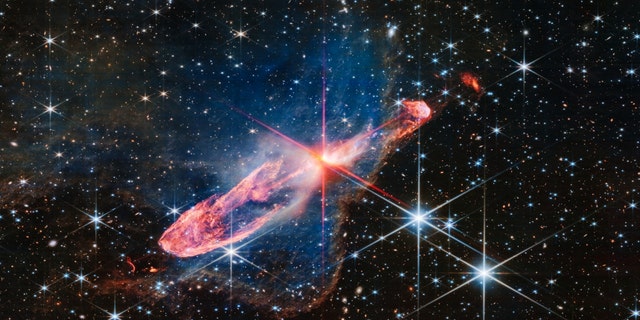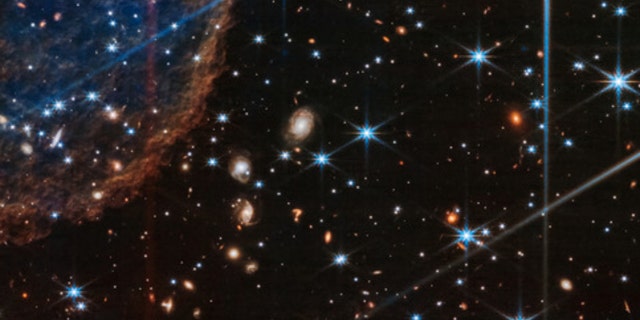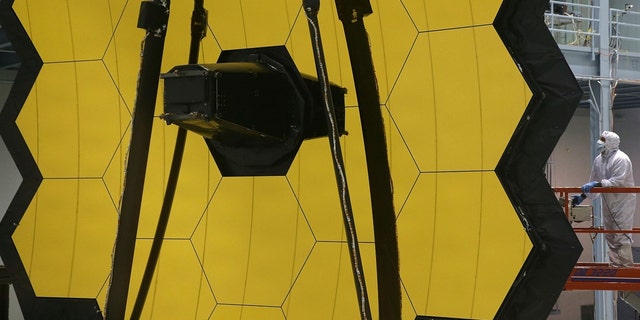While questions about the universe abound, a James Webb Space Telescope image has recently raised others.
The telescope’s high-resolution Near-Infrared Camera snapshot of a pair of forming young stars also caught what appears to be a cosmic question mark toward the bottom right.
The stars, captured in near-infrared light, are known as Herbig-Haro 46/47 and are buried in a disk of gas and dust.
Located just 1,470 light-years from Earth in the Vela Constellation, the object is just a few thousand years old. Over millions of years, NASA says, the stars will fully form.
WEBB SPACE TELESCOPE CAPTURES STUNNING SHOTS OF RING NEBULA

NASA’s James Webb Space Telescope has captured a tightly bound pair of actively forming stars, known as Herbig-Haro 46/47, in high-resolution near-infrared light. Look for them at the center of the red diffraction spikes, appearing as an orange-white splotch. (NASA, ESA, CSA. Image Processing: Joseph DePasquale (STScI))
The space agencies working on the telescope explain that, in the background of the shot, lie extremely distant galaxies.
“Blue objects with diffraction spikes are stars, and the closer they are, the larger they appear. White-and-pink spiral galaxies sometimes appear larger than these stars, but are significantly farther away. The tiniest red dots, Webb’s infrared specialty, are often the oldest, most distant galaxies,” the European Space Agency noted.

A “question mark” is captured in this James Webb Space Telescope image of a tightly bound pair of actively forming stars, known as Herbig-Haro 46/47, in near-infrared light. (Image: NASA, ESA, CSA. Image Processing: Joseph DePasquale (STScI))
WEBB SPACE TELESCOPE TAKES STUNNINGLY DETAILED INFRARED IMAGE OF ACTIVELY FORMING STARS
What punctuates the image may be up for debate – but scientists told Space.com earlier this month it is likely a galaxy, or galaxies.
“It is probably a distant galaxy, or potentially interacting galaxies (their interactions may have caused the distorted question mark-shape),” representatives of the Space Telescope Science Institute (STScI), which manages Webb’s science operations, told Space.com.

The James Webb Space Telescope during assembly Nov. 2, 2016, at NASA’s Goddard Space Flight Center in Greenbelt, Maryland. (Alex Wong/Getty Images)
According to the institute, the object’s reddish hue in the image indicates that the object is quite distant.
CLICK HERE TO GET THE FOX NEWS APP
“This may be the first time we’ve seen this particular object,” it added. “Additional follow-up would be required to figure out what it is with any certainty. Webb is showing us many new, distant galaxies – so there’s a lot of new science to be done!”
Matt Caplan, an assistant professor of physics at Illinois State University, also told Space.com that the object might be two galaxies merging – although noting that there are plenty of additional possibilities.
